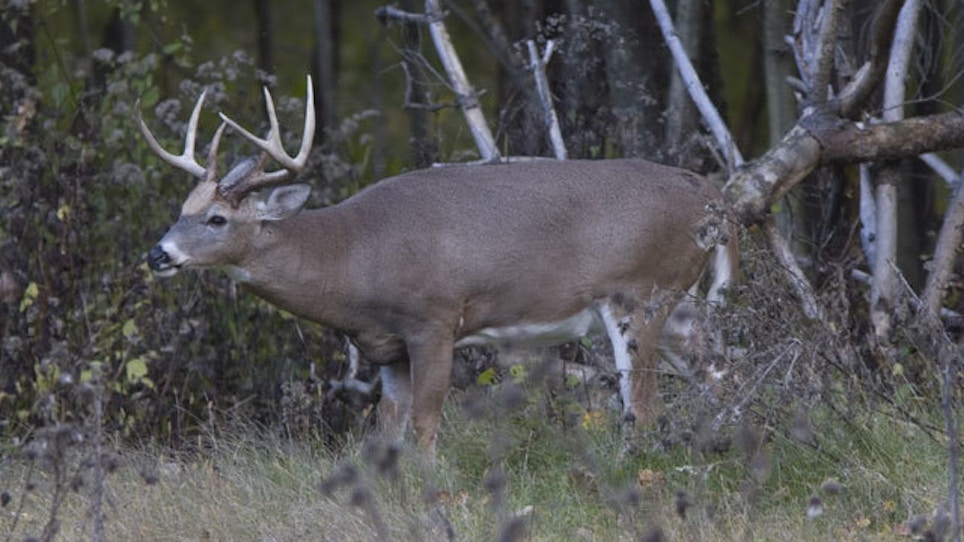Many bowhunters enjoy the challenge of still-hunting whitetail bucks. Moving quietly and staying low to avoid a buck’s super senses is only part of the strategy. Locating buck hotspots is another, especially for bowhunting at ground level.
Transition Zones Are Big Buck Hotspots
Transition zones, openings in the forest, once devoid of vegetation, are now likely to support finger- to wrist-sized saplings, raspberry and blackberry briars, goldenrod, stag horn sumac, dogwood, hawthorn and various grasses instead.
Old farmsteads are good spots to find these early-season and pre-rut magnets. They can be grown-over pastures and long-abandoned crop fields. Other good places: dilapidated beaver dams, natural slides, clear-cuts and two- or three-year-old burns. Many transition zones are adjacent to brush-riddled apple orchards or mature stands of nut-bearing oak, hickory, or beech trees.
The better transition zones are not close to active agriculture. Instead they are near or en route to a buck’s bedding grounds. In fact, “good” transition zones can be a half-mile to a mile or more away from an alfalfa lot or large cornfield in farm country, or a big woods feeding area such as the banks of a river or the periphery of a swamp.
Typically, a racked deer will leave his early-season or pre-rut daytime bedding area late in the day and enter a transition zone to munch on goldenrod, leaves, various plant stems, etc. There is plenty of cover here, and, feeling safe, a buck will linger here for some time. Then using a ravine or even a nearby stand of open hardwoods as a conduit, he will time his departure so that he arrives at a large opening at or near dark.
In the morning he will again pass through this transition zone, or another one nearby, and linger for a bit until bedding down soon after sunrise. He may even bed down in the transition zone.
Still-Hunt Transition Zones Just Once Or Twice Weekly
Be careful what you brush up against, and always wear a cover scent on your feet. Fox or skunk seems to do the trick most of the time. Once a buck knows you’ve been snooping around, he will avoid that particular transition zone, often for the remainder of the season.






